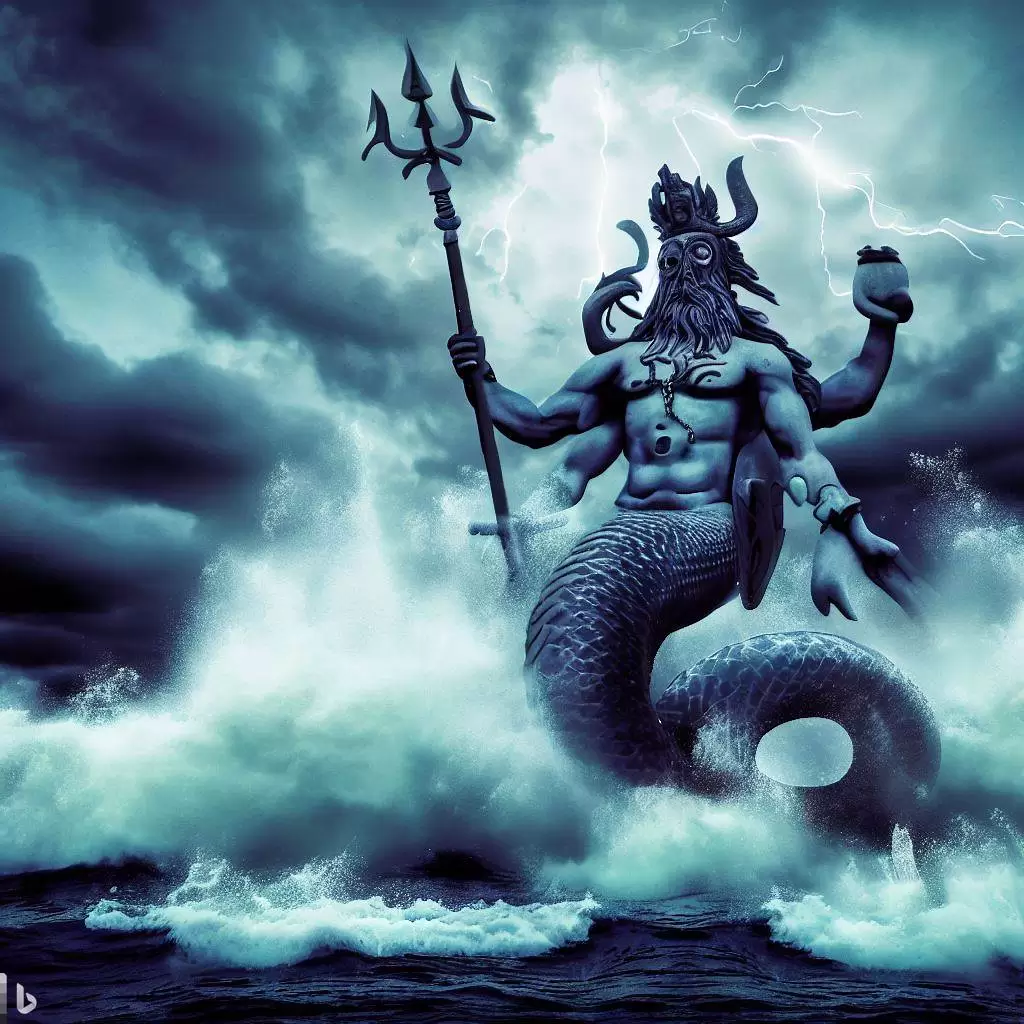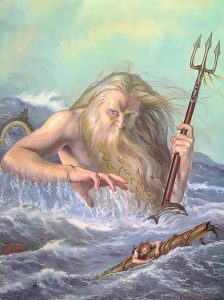
Aegir is a figure from Norse mythology who is commonly referred to as the god of the sea and storms. He is often depicted as a powerful giant and is considered one of the prominent deities associated with the ocean in Norse mythology.
Aegir is known to dwell in an underwater hall called “Aegir’s Hall” or “Aegir’s Palace,” which is described as a grand and magnificent place. This hall is said to be located beneath the waves, and it serves as a gathering place for the gods and other mythical beings.
In Norse mythology, Aegir is portrayed as a hospitable and generous host who frequently invites the gods to his hall for feasts. He is particularly known for brewing ale, and these feasts often involve copious amounts of ale flowing freely for the gods and guests.
While Aegir is generally seen as a benevolent and jovial deity, he is also associated with the unpredictable and dangerous nature of the sea. As the god of storms, he is said to control the tempestuous waves and is responsible for creating the treacherous conditions that sailors must navigate.
Aegir is married to the goddess Ran, who is often depicted as a personification of the sea. Together, they have a multitude of daughters known as the “Aegir’s Daughters” or the “Nine Wave Maidens,” who are believed to personify different characteristics of the ocean.
Overall, Aegir’s role in Norse mythology revolves around his dominion over the sea and storms, his hosting of grand feasts for the gods, and his association with the unpredictable and dangerous nature of the ocean. His character adds depth and complexity to the rich mythological tapestry of Norse cosmology.





